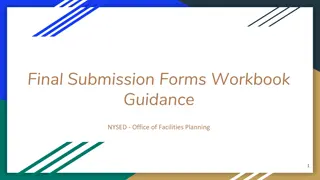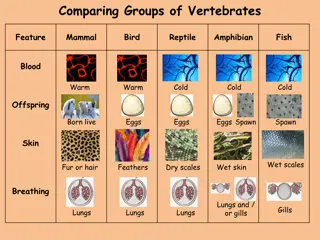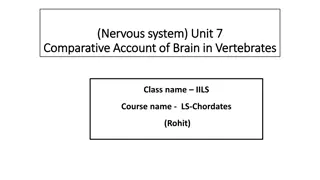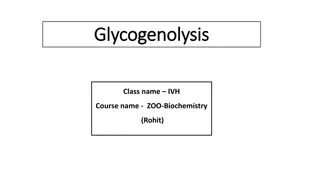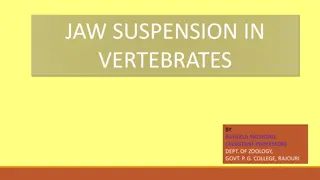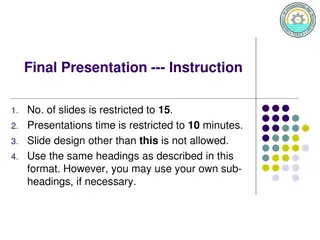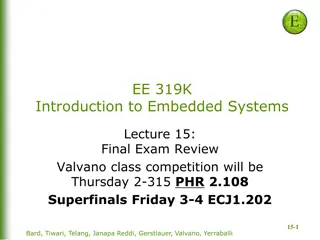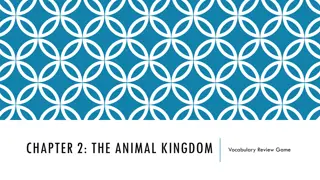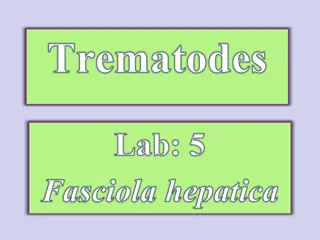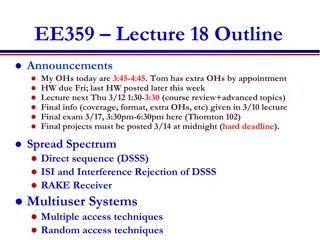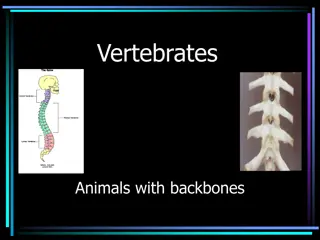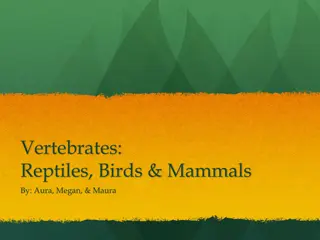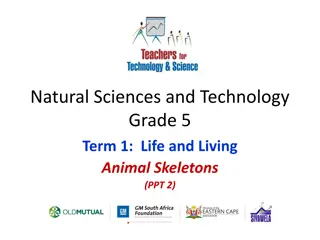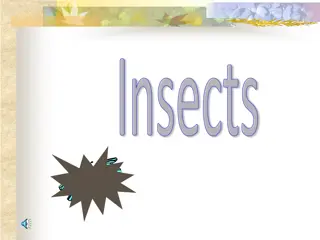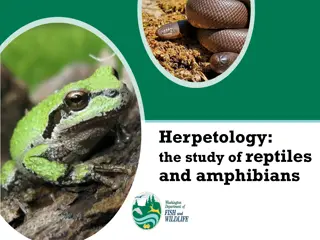Vertebrates Final Review - Study Guide with Images
Explore the world of vertebrates with this comprehensive final review. Learn about chordates, fish, amphibians, reptiles, birds, and mammals through informative images and questions. Test your knowledge on topics like excretion, respiratory organs, locomotion, and anatomical features unique to chordates. Enhance your understanding of vertebrate biology with this engaging study resource.
Uploaded on Sep 13, 2024 | 0 Views
Download Presentation

Please find below an Image/Link to download the presentation.
The content on the website is provided AS IS for your information and personal use only. It may not be sold, licensed, or shared on other websites without obtaining consent from the author.If you encounter any issues during the download, it is possible that the publisher has removed the file from their server.
You are allowed to download the files provided on this website for personal or commercial use, subject to the condition that they are used lawfully. All files are the property of their respective owners.
The content on the website is provided AS IS for your information and personal use only. It may not be sold, licensed, or shared on other websites without obtaining consent from the author.
E N D
Presentation Transcript
VERTEBRATE FINAL REVIEW 1
FISH 3
REPTILES 5
BIRDS 6
MAMMALS 7
Mammals Amphibians Chordates Fish Reptiles Birds $100 $100 $100 $100 $100 $100 $200 $200 $200 $200 $200 $200 $300 $300 $300 $300 $300 $300 $400 $400 $400 $400 $400 $400 $500 $500 $500 $500 $500 $500
Ammonia is excreted by all of the following EXCEPT a) larval amphibians. b) tunicates c) most reptiles. d) most fishes. $100 9
c) most reptiles $100 10
What is the general rule regarding respiratory organs in chordates? a) Aquatic chordates use lungs, and land vertebrates use gills. b) Aquatic chordates use lungs and gills, and land vertebrates use gills. c) Aquatic chordates use gills, and land vertebrates use lungs. d) Aquatic chordates use gills, and land vertebrates use lungs and gills. $200 11
$200 c) Aquatic chordates use gills, and land vertebrates use lungs. 12
$300 Bipedal locomotion consists of a) swinging from branch to branch. b) using the tail to grasp branches during walking. c) moving the big toe against the other digits. d) walking on two feet. 13
$300 d) walking on two feet. 14
$400 In chordates, the long supporting rod that runs through the body is called the a) nerve cord. b) notochord. c) pharyngeal pouch. d) tail 15
$400 b) notochord 16
$500 All chordates have: a) a bony skeleton b) pharyngeal pouches c) a backbone d) fin girdles or limb girdles 17
$500 b) pharyngeal pouches 18
$100 Sharks have all of the following except: a) placoid scales b) internal fertilization c) a swim bladder d) a cartilaginous skeleton 19
$100 c) a swim bladder 20
$200 The amount of urine a fish produces depends primarily upon: A) time of year B) size of the fish c) environment in which the fish lives d) diet of the fish 21
$200 c) environment in which the fish lives 22
$300 The structure shown is a: A) lung b) lateral line c) gill d) ventricle 23
$300 c) gill 24
$400 Which arrow indicates the flow of water? a) arrow A b) Arrow B c) Arrow C d) none of the arrows show direction of water flow 25
$400 c) Arrow C 26
$500 The heart of a fish has: a) one atrium and one ventricle b) one atrium and two ventricles c) two atria and one ventricle d) two atria and two ventricles 27
$500 a) one atrium and one ventricle 28
$100 Amphibians without tail are classified in the order: a) Agnatha b) Anura c) salamanders d) newts 29
$100 b) Anura 30
$200 Adult frogs and toads are: a) herbivores b) omnivores c) parasites d) carnivores 31
$200 d) carnivores 32
$300 Amphibians that have slender bodies and no limbs are classified as: a) anurans b) caecilians c) salamanders d) newts 33
$300 b) caecilians 34
Daily Double!! Daily 35
$400 List three ways that anurans can acquire oxygen 36
$400 Lungs, skin, inside surface of mouth 37
$500 How many chambers does a frog heart have? a) 1 b) 2 c) 3 d) 4 38
$500 c) 3 39
$100 The skin of a reptile is: a) moist and watertight b) moist and thin c) dry and nearly watertight d) dry and permeable to water 40
$100 c) dry and nearly watertight 41
$200 The geographical range of reptiles is limited by: a) length of day b) moisture c) temperature d) topograpphy 42
$200 c) temperature 43
$300 Which reptile would be most likely to excrete nitrogenous wastes in the form of uric acid? a) an aquatic turtle b) a desert tortoise c) a crocodile d) an alligator 44
$300 b) a desert tortoise 45
The tuatara is native to: $400 a) North and South America b) Africa c) New Zealand d) Every continent except Antarctica 46
$400 c) New Zealand 47
$500 The heat-sensing organ between each eye and nostril of a rattlesnake are the: a) tracheal organs b) Jacobsen s organs c) thermal organs d) pit organs 48
$500 d) pit organs 49
$100 A bird s crop: a) temporarily stores food b) is the first chamber of its stomach c) is critical for flight d) grinds and crushes food 50




